Those of you considering building your very first aviary might be wondering what are some of the birds can I include in my aviary and which birds work well together.
The variety of species of birds in your aviary makes for a great show with a range of colors, sounds, and playful antics. With a pretty mix of parrots and songbirds, you’ll have a lively community, providing both an entertaining spectacle for guests and a rewarding experience.
Whether your aviary is located in a garden, indoors, or outdoors, we have recommendations to help you choose birds that not only coexist harmoniously but also contribute to an enjoyable and visually appealing aviary.
Quick Navigation
Best Aviary Birds
Finches
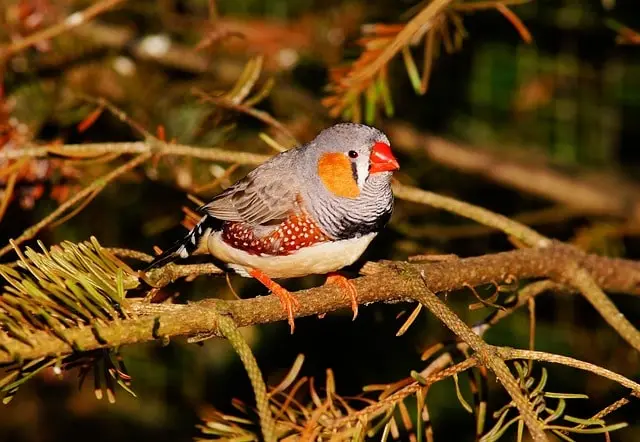
Finches are one of the most popular aviary birds because they thrive in a flock setting. They are hands-off birds and prefer the company of other finches over humans. They are a delight to watch and you can listen to them chirp and sing for hours.
There are many different species of finches that you can keep in your aviary together such as Zebra finches, Gouldian finches, Bengalese finches, Java sparrows, and others.
However, When considering keeping different species of finches in an aviary, it is advisable to consult with the breeder from whom you are getting your birds.
While many finch species can coexist in the same space, individual variations in behavior may occur. Some birds can display more aggression while others may be timid compared to the typical behavior of their species.
Crimson Rosellas
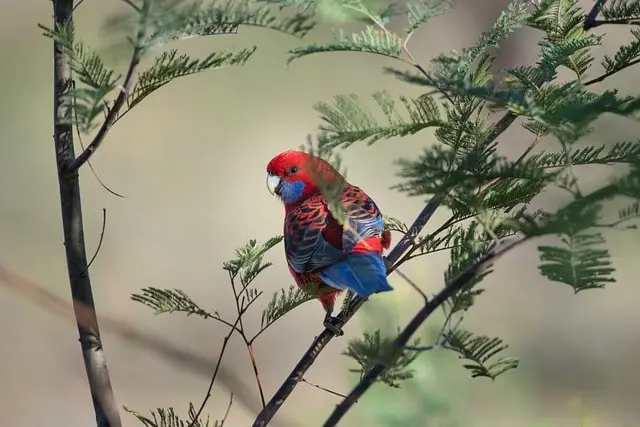
With vibrant red, blue, and black plumage, crimson rosellas add a gorgeous touch to the space and make heads turn. They are a common aviary bird and are admired for their stunning looks and loud calls.
Crimson rosellas are native to southeastern Australia and inhabit tall eucalypt and wet forests. In the wild, these birds mostly eat seeds of eucalypts, grasses, flower buds, and insects. They have a range of vocalizations, including screeching sounds and metallic whistles.
Doves
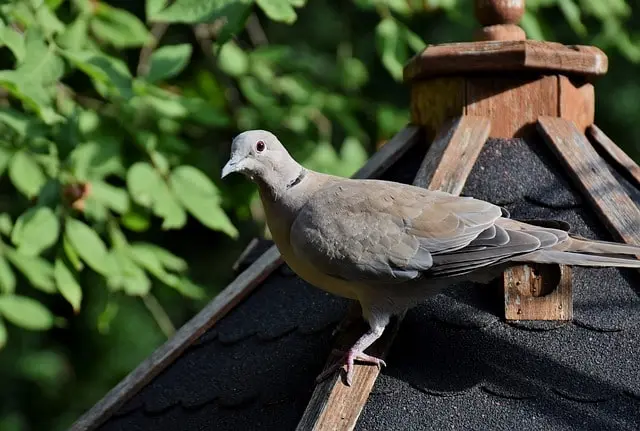
Doves are well-suited for garden aviaries, given their social and gentle nature. These birds thrive in the companionship of fellow doves and can peacefully coexist in flocks. Doves like to spend most of their time on the ground rather than perching.
Diamond doves and ring-necked doves are two great options if you are thinking about adding doves to your aviary. Both of these species are small and docile and generally do well with each other. However, do not house them with birds that have aggressive tendencies.
Button Quails

Button quails can be excellent additions to an aviary. These small ground-dwelling birds are social, easy to care for, quiet, and very tame. Button quails like to roam freely on the ground because they are not great fliers so they should be given adequate space to move around in their enclosure.
They can be kept with most other aviary birds like finches, canaries, doves, and budgies as they are calm and docile in nature. Quails have a diverse diet that includes pellets, a mix of fruits, vegetables, indigestible grit, and soluble grit.
Budgies

Budgies are not just great pet birds, but they also do well in aviaries and flock situations. A large aviary with a variety of perches is a must to keep budgies happy, since these birds are very active during the day and like to fly around the cage.
Budgies get along with most birds because of their amicable nature, however, it is important to know that they can sometimes act territorial, which may lead to skirmishes with other birds. If you’re planning to keep them in an outdoor aviary, remember to make arrangements to heat the area in the winter. Budgies cannot tolerate very low temperatures.
Bourke’s Parakeet
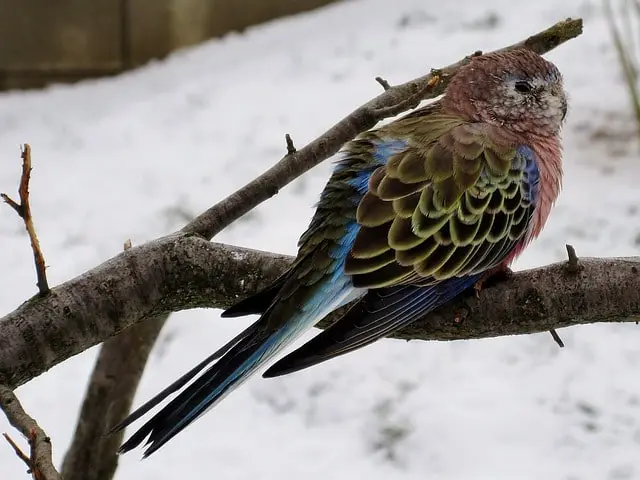
Bourke’s Parakeet is a small and gentle parrot species native to Australia. They come in a variety of pastel-colored plumage shades including pink, peach, and blue. These birds exhibit a calm demeanor and are very social with other birds.
The Bourke’s parakeets are quiet and inactive for most of the day because they are not diurnal birds like other parrots. They are active after sunset and in the morning.
The Bourke’s parakeet is an ideal aviary bird because of its mellow and amiable personality. They get along pretty well with budgies, finches, and cockatiels.
Rainbow Lorikeets
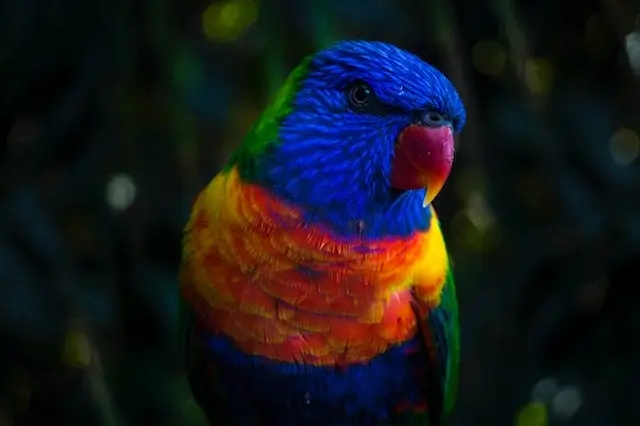
The Rainbow Lorikeet is a colorful and vibrant parrot species native to South Australia. Rainbow Lorikeets are known for their striking plumage, featuring a spectrum of colors including blue, green, yellow, orange, and red. They are one of the most beautiful birds you can add to your aviary.
Although they have a stunning appearance and a bubbly personality, rainbow lorikeets are not for beginners. Lories require a much different diet than other parrots and birds. These parrots have a weaker gizzard and cannot digest seeds.
A lorikeet diet mainly includes fruits, vegetables, flowers, and formulated nectar powder. Lories have a brush-like tongue that they use to eat nectar from flowers. Because of such high sugar, they are always high energy. Also, due to the moist nature of the foods they eat, their droppings have a loose consistency.
Rainbow Lorikeets have a social nature, but they often do not get along well with other bird species. They are medium-sized parrots, so you should not house them with smaller and gentler birds.







